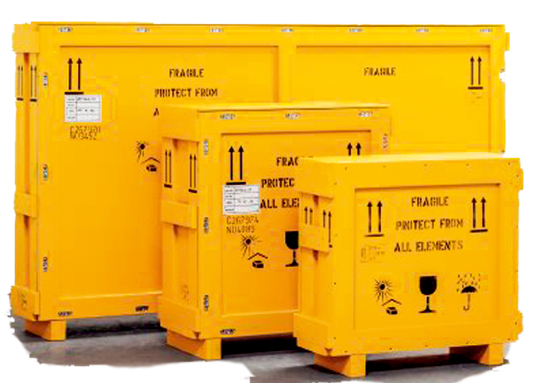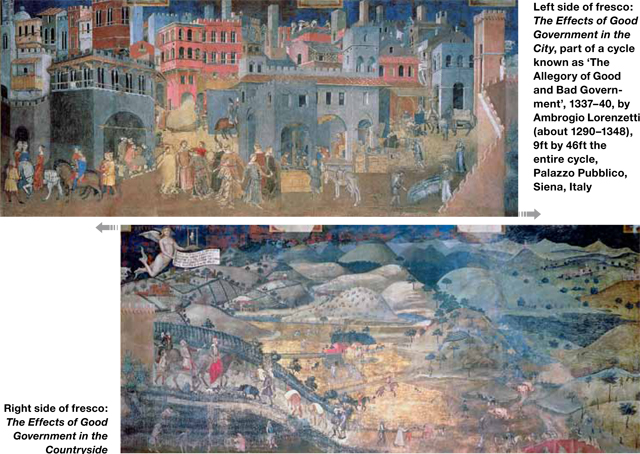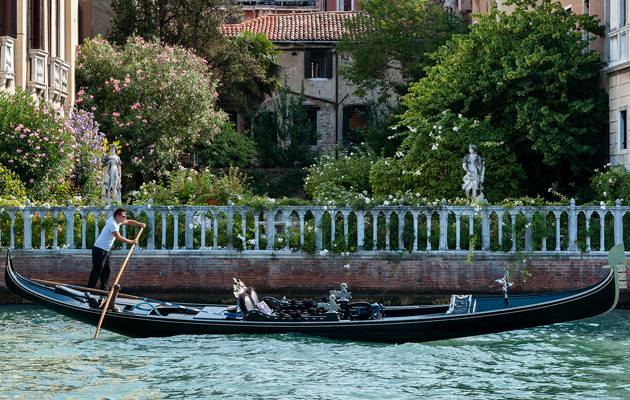How to move an art collection
Relocating can be stressful at the best of times. We reveal the art of moving art.


Whether you’re a major private collector or have one important artwork, when moving home, you’ll want to protect your assets during transportation and storage as well as at the point of installation. Of course, nobody wants the entire village to see valuables being delivered, so discretion is the industry watchword. Art-transportation specialists such as Momart (see below)— which installs major exhibitions at locations such as the British Museum, the V&A and galleries worldwide—drive unmarked vans and many specialist advisors don’t even have websites.
Where should you start when you need to move your collection? Before you do anything, consult an independent advisor to look at it in situ in its current home and he or she will be able to assess the value of the items to be moved and note what position they’re in. They will thus also be able to help with obtaining the right sort of insurance and handling any technical queries.
An experienced specialist should be brought in to advise on transportation—by road, air or sea freight—and bespoke methods of packaging. Fine-art crates can be made specially for your pieces to mitigate against risk posed by shock, vibration or impact and to prevent dust, dirt or water invasion. If your artworks aren’t going straight into their new home, companies can also advise on the best storage options, such as climate control or whether discrete areas will be required for short- or long-term storage.

Who to know:
On the move (020–7426 3000; www.momart.com) Momart is the specialist in transport, handling and storage of fine art. Director Kenneth Burgon stresses that no job is too big or too small: ‘If it’s valuable to you, it’s valuable to us and will be treated with the same expertise. Our staff is comprised of art experts trained to handle and appreciate the art as if it were their own.’
Caring for your collection (07801 105221; emeline@caringforyourcollection.com) Emeline Winston works with owners and helps them manage their collections around the world. ‘People might have paintings or contemporary installations, precious ceramics, jewellery and sculptures—it all needs to be moved carefully and everything from lighting and security to positioning needs to be thoroughly considered,’ she says.
Buyers support services (07831 645534; adrianpburke@sky.com) Sue Swan and Adrian Burke formerly worked for Sotheby’s and now provide advice and fulfilment on all art-related operational and logistical requirements.
Exquisite houses, the beauty of Nature, and how to get the most from your life, straight to your inbox.
Valuable advice (07707 681264; www.lequipement.com) Michael Mohammed of L’Équipement des Arts is an online gallery owner and curator. ‘I advise clients on the value of their collections and on issues regarding transport and installation. I can be present during the process to document what happens at every stage,’ he explains.
Storage solutions (00 1 212 265 3111; www.uovo.org) Uovo:NYC is a clever storage facility set up by Steven J. Guttman, a major collector, and run by Briton Tom Hale, formerly of the White Cube galleries in London. Humidity controls and particle filtration are just some of the technological advances used to maintain as perfect as possible an environment for artworks. ‘We care for the assets of artists, museums, galleries and individual collectors and work with clients to devise bespoke stewardship solutions.’
Moving in tips If possible, take your advisor to the new house as soon as possible so they can start thinking about where to place/hang your existing collection. Considerations include:
- Positioning of paintings—watercolours, pastels and drawings must never be in direct sunlight or above a radiator. Oil on canvas is more robust
- Tapestries and valuable carpets/rugs will also fade in sunlight
- Lighting and technology (security) all have to be considered—your specialist can liaise with an interior designer or architect to make sure this is installed correctly and fits discreetly within the interior scheme
- Discuss the need to build any custom-made display cases for ceramics or glass
- Is sculpture to go indoors or outdoors? How heavy is it? Does the floor need to be reinforced? Do you need to build a plinth? What is the best way to light it?

My Favourite Painting: Cressida Bell
Cressida Bell chooses her favourite painting for Country Life.
My Favourite Painting: Rory Stewart
Rory Stewart chooses his favourite painting for Country Life.

One space left on our Venice and the Veneto gardens tour
Helena Attlee and Jenny Condie will lead an exclusive Country Life readers' tour to Venice and the Veneto next spring.

A room with a Venetian view
It's love rather than cold economic sense that drives the purchase of most Venetian property.
Country Life is unlike any other magazine: the only glossy weekly on the newsstand and the only magazine that has been guest-edited by His Majesty The King not once, but twice. It is a celebration of modern rural life and all its diverse joys and pleasures — that was first published in Queen Victoria's Diamond Jubilee year. Our eclectic mixture of witty and informative content — from the most up-to-date property news and commentary and a coveted glimpse inside some of the UK's best houses and gardens, to gardening, the arts and interior design, written by experts in their field — still cannot be found in print or online, anywhere else.

